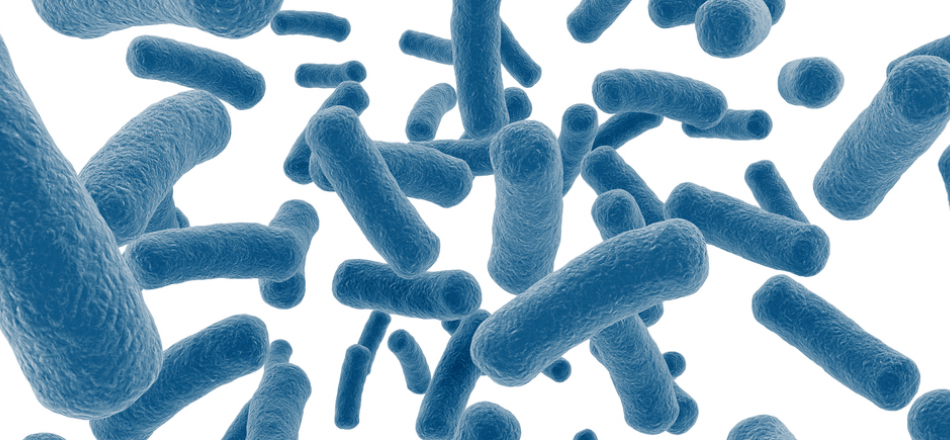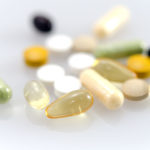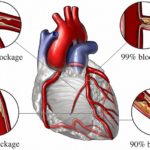You’ve experienced it many times before. Perhaps you ate some bad pizza at lunch but you didn’t know it until the intense stomach cramps suddenly hit you. Or maybe later that evening you develop a fever and you start to vomit. These are the all-too-familiar signs of food poisoning.
Knowing the different causes of food poisoning is perhaps the best way you can protect yourself from this debilitating condition. Let’s take a look at how food becomes contaminated as well as what you can do to avoid getting food poisoning.
CAUSES OF FOOD POISONING
We all know that eating or drinking foods that are contaminated with germs (i.e. bacteria or viruses) can cause food poisoning. This usually occurs from unsanitary conditions when food is prepared, stored, or handled.
Here are some examples of how food can become contaminated.
- Cooking with unclean utensils, cutting boards, and other kitchen tools
- Not properly washing your hands
- Using water that is polluted with animal or human feces to grow crops
- Allowing food to come into contact with bacteria and other microorganisms
- Improper storage (e.g. storing food at the wrong temperature or keeping them stored for too long)
Food allergies can also cause some people to have an abnormal reaction after eating certain foods. These allergies can range from mild to server and may cause severe illness or even death.
TIPS TO AVOID FOOD POISONING
Sometimes you can clearly see or smell food to determine whether it’s safe to eat, but other times it’s not so obvious. Here are some tips that will help you steer clear of food poisoning:
- Never eat anything with mold
- Thoroughly cook meats (160˚ F for beef and 165˚F for chicken)
- Wash vegetables and fruits before eating
- Throw out food that is past its expiration date
- Avoid drinking water from streams or untreated wells
- Wash hands before, during, and after handling food
- Clean all kitchenware after use including utensils, pots, pans, and dishes
- Store leftovers in the refrigerator with an air-tight lid
- Defrost foods in water or the refrigerator—don’t thaw them at room temperature
Of course, there’s no way to know whether you’re eating contaminated food when you go to a restaurant or a friend’s house. However, you can reduce your chances of food poisoning by eating out less and offering to prepare food when you eat at someone else’s home.

WHEN TO SEEK MEDICAL ATTENTION
While most cases are treated at home with rest and plenty of hydration, food poisoning can be severe enough to require medical attention. Be sure to contact an emergency center if you have the following symptoms:
- A fever above 101.5˚ F
- Diarrhea that lasts longer than three days
- Intense vomiting after eating or drinking
- Severe abdominal cramping
- Bloody stool or vomit
- Double vision
- Muscle weakness
Some people who get food poisoning become severely dehydrated, in which case you should consult a doctor right away. Symptoms of dehydration include: extreme thirst, dry mouth, dizziness or lightheadedness, inability to urinate (or urine is dark in color), and sunken eyes.
Botulism, an illness caused by consuming bacterium (Clostridium botulinum) in canned meats or other preserved foods, is an extremely dangerous and life-threatening form of food poisoning. This illness causes toxins to attack nerves that control muscle function. If you suspect someone has botulism, drive the person to an emergency center immediately.
It wasn’t until I got a frantic phone call this past Sunday that I remembered how absolutely dreadful feeling nauseous looks.
“Can you meet me downstairs please?” I heard the muffled sound of traffic in the background. “I’m in my car, two blocks away, and I’m feeling so nauseous.” My friend K. sounded absolutely awful.
I instinctively grabbed a couple of small plastic garbage bags (that stems from the days of having small children who habitually got carsick) and rang for the elevator. Fourteen floors took longer than usual. As I got outside, her car was pulling up. I ran around to the driver’s side, ready with my strong arm and my sick-bag and helped her into the building.
1. was doubled over in pain, sweating profusely and breathing irregularly. She had to sit down on a chair in the lobby to steady herself before she could make it upstairs to her apartment.
“What in the world happened?” I asked.
“I’m not sure,” she answered, her teeth chattering. “But I think … it was the shrimp salad.”
One in six Americans (that’s 48 million of us) each year becomes sick from eating contaminated food. And up to 70 percent of the cases of food poisoning originate not in a manufacturing plant (as in many well-documented cases of contaminated produce), but in the kitchen.
Storage or preparation is often the culprit.
You know this saying? “You can’t control what happens to you, but you can control your attitude.”
Well, here’s where I’d turn it around slightly and say instead, “Your attitude can control what happens to you.”
In other words, being careful and prudent in the kitchen can go a long way toward keeping you safe from food poisoning. How?
Storage
Separate raw meats, poultry and fish from other foods in the refrigerator. Store them in a bin or tray to catch possible dripping, or on the lowest shelf.
If you’re not using meat within two to three days of purchase, freeze it in moisture- resistant wrap. After securely wrapping, place it in plastic freezer bags.
Use eggs within three to five weeks of purchase. Refrigerate them as soon as you get them home. Keep them in their carton and place them in the coldest part of the refrigerator—not in the door, which can cause temperature fluctuations that lead to bacteria growth.
If your refrigerator and freezer do not have built-in thermometers, put some there. The refrigerator’s temperature should be at or below 40 degrees; the freezer should be at two degrees.
Never defrost uncooked foods on the counter; always place them in the refrigerator, microwave or in a bowl of ice water. Use a plate or pan under the thawing food so the dripping does not spill onto other foods.
Refrigerate or freeze perishable foods within two hours of purchase or preparation, but sooner (within one hour) if the room temperature is above 90 F (32.2 C).
Preparation
To begin, wash hands with warm soapy water for at least 20 seconds. Rewash them after using the bathroom, handling pets, blowing your nose, coughing, sneezing or handling uncooked eggs, raw meat, poultry or fish and their juices.
If your hands have any sort of abrasion or infection, wear clean disposable gloves.
Thoroughly wash surfaces that come into contact with raw meat, poultry, fish or eggs with hot, soapy water before moving on to the next step of food preparation.
Use paper towels to clean kitchen surfaces. If you’d rather use a kitchen sponge or cloth (which often harbor germs) make sure to wash the cloths often in the hot cycle of your washing machine and place the sponge in the dishwasher or microwave (for no more than two minutes), which can effectively kill bacteria.
Keep cutting boards clean by washing in hot, soapy water after each use, then rinse and air-dry or pat dry with clean paper towels. They can be sanitized with a solution of one tablespoon liquid chlorine bleach per gallon of water. To clean, cover the surface with the bleach solution and let it stand for several minutes, then rinse and air or pat dry.
Wash nonporous cutting boards (acrylic, glass, plastic and solid wood boards) in the dishwasher.
Replace cutting boards once they become excessively worn or develop deep grooves, which are hard to clean.
Always wash produce before using. This includes melons, lemons, limes and even fruits that you plan to peel. Organisms that might be lingering on the surface can spread inside when the fruit is cut.
Always thoroughly rewash a knife, plate or cutting board that has come in contact with raw food to avoid cross-contamination, a common cause of food-borne illness.
When using a food thermometer, wash the probe after each use with hot, soapy water.
Cover foods securely if you’re making them ahead of time, and refrigerate them promptly, keeping them cold until it’s time to reheat or serve.
Cooking
Be aware of proper temperatures cooking foods to the right temperature can kill harmful organisms in most foods.
Ground beef or pork should be cooked to 160 F (71.1 C). Steaks and roasts should reach at least 145 F (62.8 C). Pork should be cooked to at least 145 F (71.1 C). For chicken and turkey, cook to 165 F (73.9 C). Most steaks, roasts and chops should rest for 3 minutes after cooking, before serving, during which time the temperature continues to rise or remains constant, which destroys germs.
Fish is usually cooked safely when it reaches 145 F (62.8 C). If preparing shellfish like shrimp, lobster and crab, cook until flesh is milky white or opaque and firm. Cook clams, mussels and oysters until the shells are open. Eggs should be cooked until the yolk and white are firm.
When in doubt
Not sure if a food has been prepared, served or stored correctly? Was food left out too long? Did the power outage last for more than four hours (or two hours for highly perishable food)? Was the can rusted, dented or swollen?
High profile outbreaks, such as that on the P&O cruise liner Aurora in 2003, have meant that holidaymakers are more aware than ever of the consequences of food related illnesses and the importance of staying healthy whilst abroad.
2.1 million British tourists suffered from food related illnesses last year but Mark Harrington, CEO with food hygiene specialist Check Safety First, believes that by following a few simple precautions however, holidaymakers can reduce the risks.
Different forms of food poisoning
There are many types of food poisoning, each with its own nasty variation. Some of the most prolific types are set out at the end of this article.
Not strictly food related, Crytosporidiosis is another infection to be aware of. Although a water-borne illness contracted from infected swimming pools, its symptoms are very similar to food poisoning. The best way to avoid it is to steer clear of dirty swimming pools, so if the pool at your destination resort looks dirty then don’t use it!
Planning ahead
Exercising, eating lots of fruit and vegetables and having plenty of sleep in the weeks before travelling will do wonders to boost the immune system, helping to quickly get rid of any germs you pick up abroad.
Taking a probiotic for a few weeks beforehand is also a good idea as it lines the stomach with ‘friendly’ bacteria. These bacterial cultures help to aid digestion, bolster the immune system and battle for space with ‘bad’ bacteria, such as those that cause food poisoning.
Tips to avoid food poisoning
- Use bottled or sterilised water, if you are concerned about the safety of the local tap water.
- Avoid ice unless you are sure it was made from treated or chlorinated water.
- Eat freshly and thoroughly cooked food that is still piping hot.
- Avoid food that has been kept warm.
- Avoid uncooked food, unless you can peel or shell it yourself.
- Avoid salads, as they may have been washed in contaminated water.
- Avoid ice cream from unreputable sources. These include portable ice cream sellers who may not have adequate refrigeration and ice cream that may have melted and been refrozen.
- Be careful with fish and shellfish – uncooked fish is particularly hazardous.
What if I become ill?
Unfortunately, once you get food poisoning there is little you can do except let it run its course. The most important thing is not to get dehydrated. Drink plenty of water – little and often. It’s often a good idea to use rehydration salts for children to ensure that they keep their fluid levels high.
Blockage tablets don’t solve the problem of diarrhoea. The body needs to rid itself of the toxins so, unless it is absolutely vital, tablets should be used sparingly.
Remember that any incidence of food poisoning should be reported to your holiday rep and the hotel or restaurant that you believe may have been the source of the problem. Be aware that incubation times vary between the different forms so it may not necessarily be the food you ate the night before.
Advice and information
It’s hard to know where to turn for guidance about food hygiene when planning a holiday but there are plenty of sources which can help.
The Foreign & Commonwealth Office’s Know Before You Go campaign offers practical advice for holidaymakers about the issue of food poisoning and other holiday health matters.
World Health Organisation’s International Travel & Health website provides travellers with general information regarding travel health, vaccinations, risks and precautions.
Contrary to popular belief, the star system, which many holidaymakers rely on when choosing accommodation does not take into account food hygiene standards.
Check Safety First carries out food hygiene audits at hotels throughout the world and offers holidaymakers free access to information on its food hygiene standards. Information on hotels that have implemented exceptionally high standards of food hygiene is posted on the website, alongside details of their facilities, contact information and star rating.
Different forms of food poisoning
Symptons Include: diarrhoea with blood, nausea and vomiting.
Duration: About 2-3 days.
Incubation Period: Illness usually appears 3-4 days after exposure, but it can be as much as 9 days.
Source: Includes both food and water contamination. With careless food handling any product eaten raw may be contaminated with raw meat juices.
Norovirus
Symptons Include: diarrhoea with blood, fever and vomiting.
Duration: usually lasts up to 48 hours.
Incubation Period: Approximately 24-48 hours.
Source: This is the most common form of infectious gastro-enteritis and can be found in contaminated food and water. It is easily passed from person to person
Campylobacter
Symptons Include: severe diarrhoea sometimes with blood, severe stomach cramps and vomiting.
Duration: from two days to a week.
Incubation Period: Approximately 2-5 days.
Source: Untreated milk and water, undercooked meat, poultry and shellfish.
Salmonella
Symptons Include: diarrhoea, fever, severe abdominal pains and vomiting
Duration: 4 days to 3 weeks.
Incubation Period: Approximately 2-5 days.
Source: Usually between 12 to 72 hours. Raw eggs, unpasteurised milk and undercooked poultry and meat.
Bacillus Cereus
Symptons Include: nausea, vomiting, stomach cramps, diarrhoea and abdominal pain.
Duration: 24-36 hours.
Incubation Period: Between 6-15 hours after consumption.
Source: Contaminated cooked food, dried foods and dairy products
For more information visit us our website: https://healthcaretipshub.com







No Comment! Be the first one.